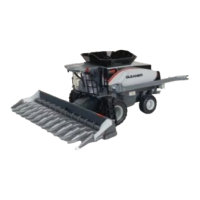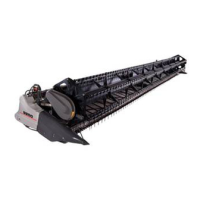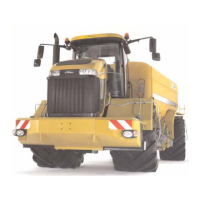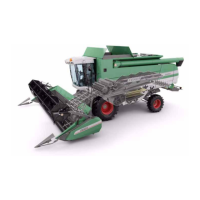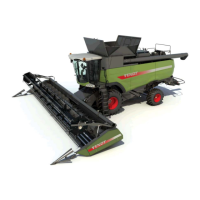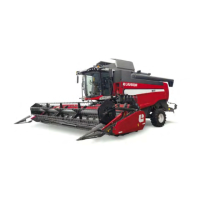SAFETY
SERVICING
•
Lower implement to ground before servicing.
•
Avoid working under implement whenever
possible. However, if it becomes absolutely
necessary to do so, be sure to safely block
machine. Install cylinder lockups in transport
position.
•
Relieve hydraulic pressure before
disconnecting lines and fittings.
•
Correct hydraulic leaks immediately. All fittings
must be tight and all lines and hoses in good
condition. Escaping hydraulic fluid, under
extremely high pressure, can penetrate the skin
and cause blood poisoning. If injured by
escaping fluid, see a doctor immediately.
•
Use a piece of wood or cardboard to detect
fluid leaks (Fig. 3). Always wear safety glasses
when working around leaking fluid.
•
Be careful not to get cut when working around
sharp shovels, ground tools and slicers.
•
After repairing or adjusting implement, remove
all tools and parts from machine before
operating it.
•
Tire changing can be hazardous and should be
done by trained personnel using proper tools
and equipment.
•
Do not re-inflate a tire that was seriously
under-inflated or run flat. Have it checked by
qualified personnel.
TRANSPORTING
•
Minimum weight of towing tractor should be at
least equal to weight of towed implement.
•
Raise implement out of ground and install
cylinder lockups in transport position.
•
Always use correct hitch pin size and secure it
with a retaining clip or pin.
•
Attach the transport safety chain between the
tractor drawbar frame and implement hitch.
•
Always lock tractor brakes together when
traveling on a public road.
•
Always make the necessary safety precautions
prior to transporting implement on public roads:
•
Be sure SMV (Slow Moving Vehicle) sign,
safety decals and conspicuity stripes are clean
and visible.
• Use approved extremity lighting and other
devices to warn drivers of other vehicles on the
highway.
• Comply with state and local laws governing
highway safety and regulations when moving
machinery.
• Use good judgment when transporting
implement on highway. Travel no faster than 20
mph (32 km/h) and maintain complete control
of machine at all times.
•
When traveling up or down steep grades, shift
to a lower gear and use extreme caution.
4
Fig. 3 - Hydraulic Leak Detection
